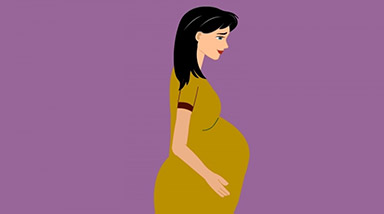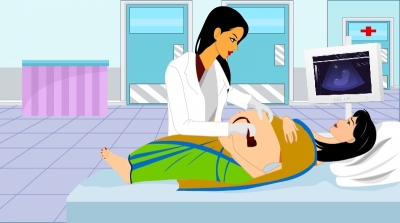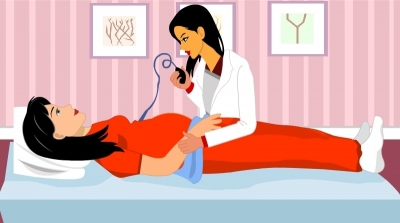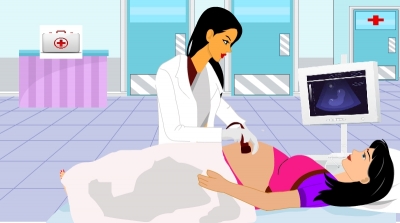Mrinali enquires from her doctor as to when she should come for all the tests. The Doctor says” Well! Mrinali - The purpose of the third-trimester visit to the hospital or clinic is to
- monitor fetal growth. The fetus grows the most in terms of weight during the third trimester.
- The visits also help the doctor to monitor fetus position especially during the last few weeks as the fetus tends to move less during this time. The fetus usually gets into the final position for birth during this time.
- The fetal well being is also checked by the Doctor by listening to the fetal heart rate.
- Some advanced tests are done, such as NST(Non Stress test) and Biophysical profile tests, and Glucose tolerance tests
- Complete blood count and Hb to look for anaemia, as the fetus demand for iron increases during the third trimester.
- Urine analysis for glycosuria and proteinuria for GD and Pre-eclampsia respectively.
- Group B strep culture is done during 36 weeks.
- Ultrasound is done at 35 to 36 weeks to confirm the position of the fetus (head or breech).
- Tdap vaccine is given. Hep-B is given if no prior immunity.
- Fetal growth - Fundal height is usually measured to monitor the growth of the baby. Fundal height is defined as the distance from the pubic bone to the top of the uterus measured in centimetres. It is usually measured from the 16th week of pregnancy and the height in Centimetres usually corresponds to the gestational age. If the height is off by a couple of centimetres, then it may indicate growth retardation.
- Blood Pressure should not be over 120/80mmHG. If it is significantly elevated above 140/90mmHg on two occasions after 20 weeks, it could be suggestive of Pre-eclampsia. Older mothers and obese mothers could have a risk of Gestational diabetes. So tests for GD is done routinely for all mothers during 24 weeks.
- If GBS culture comes back positive then the pregnant women is considered colonized by Streptococcus B and she will need to be given IV penicillin-g during delivery.
- NST( Non Stress test ) is done when there are some complications and we need to monitor to make sure baby is doing ok. One transducer measures mothers contractions and other measures fetal heart rate. Not part of the routine antenatal test but done when there are certain complications like Diabetes or pre-eclampsia. Accelerations in the heart rate of the fetus are noted. Anything is considered “acceleration” if the fetal heart rate increases by more than 15 beats per/min for more than 15 secs. If there are more than 2 accelerations over a period of 20 minutes. This is considered a re-assuring NST.
- Haemoglobin below 10g/dl is considered as Anemia and iron supplementation is needed. Patients who are RH-negative and if atypical antibodies are negative are given RhoGHAM at 28 weeks. The descent of head of the fetus into the pelvis is called lightening. Mild discomfort in the pelvis and in the genital area usually occurs. Mild cramping, mild lower extremity oedema, and urinary frequency are also normal.
Mrinali felt a lot more at ease after speaking tot he Doctor. She now knew exactly what to expect in the next three months.






